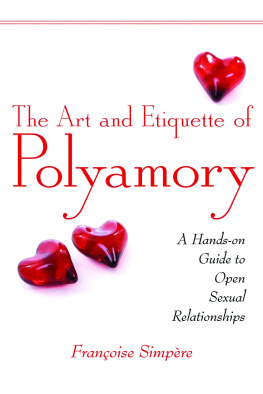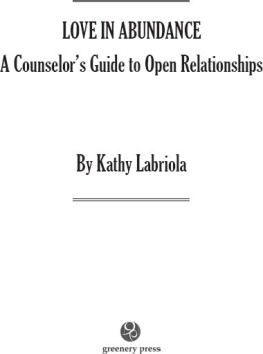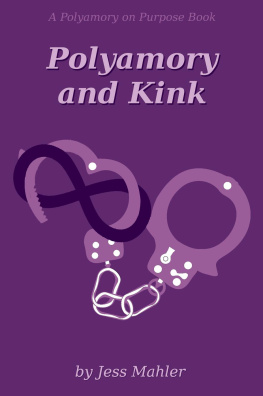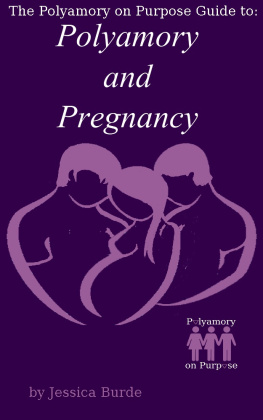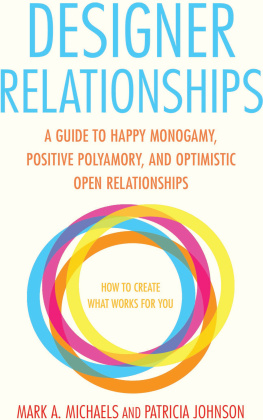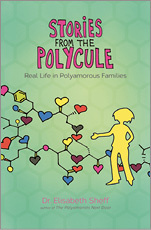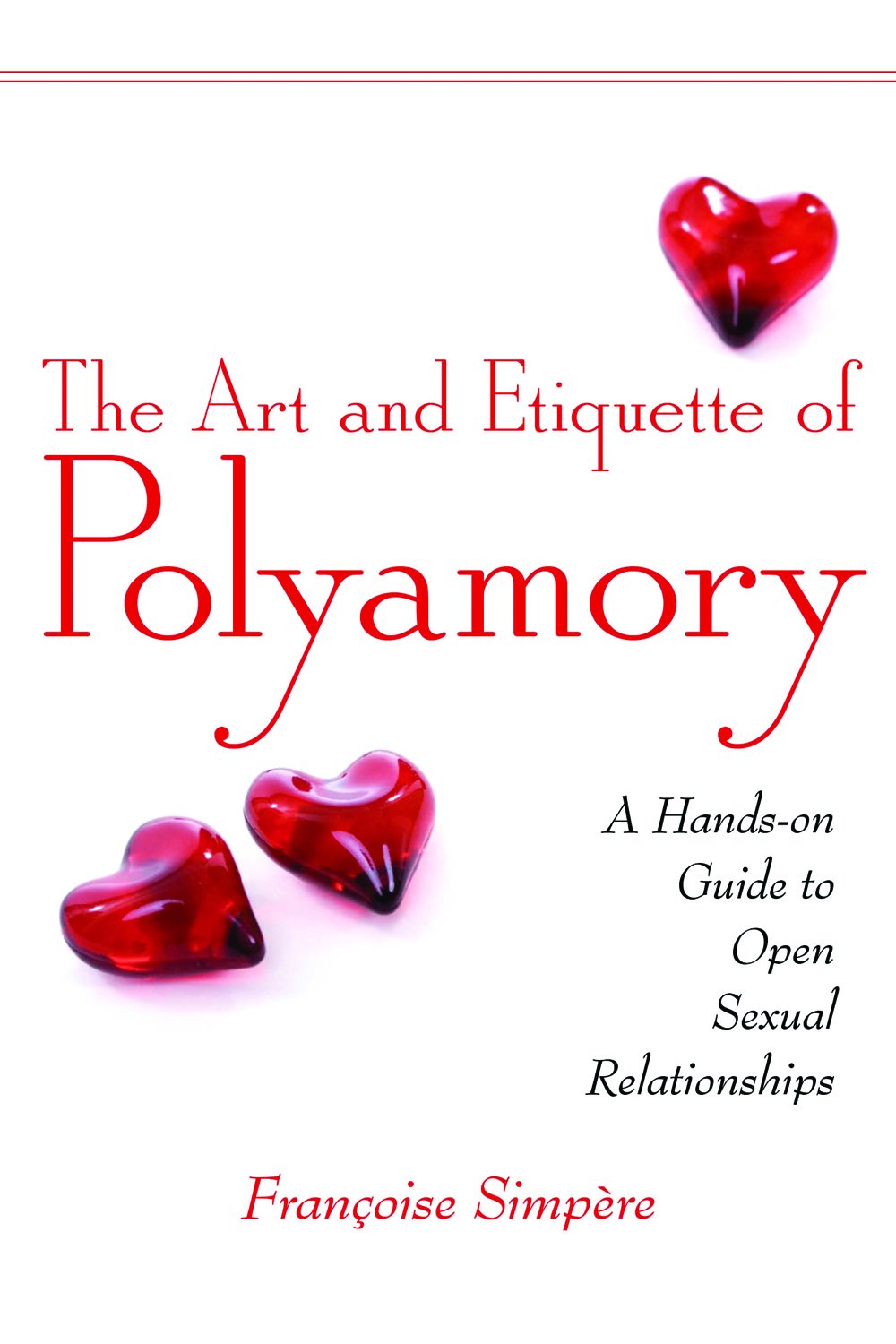F ranoise Simpre is a journalist, writer, and author of, among others, Aimer plusieurs hommes ( To Love Several Men ), Lalgue fatale ( The Deadly Seaweed ), Des dsirs et des hommes ( Men and Desire ), Bien dans leau,bien dans sa peau ( Feeling Good in Water... and in Yourself ), Les latitudes amoureuses ( Latitudes of Love ), Ce qui trouble Lola ( The Trouble With Lola ), Il nest jamais trop tard pour aimer plusieurs hommes ( Its Never Too Late To Love More Than One Man ), and Le bonheur est un art subtil ( The Subtle Art of Happiness ). Her areas of interest, present in all of her works, are eroticism, environmentalism, and social issues. As the director of the Senso collection (from French publishing house Editions Blanche), she writes fiction for television and the big screen and is also a documentary contributor. She was the subject of the documentary La grande amoureuse , directed by the Qubcois Martine Asselin, which has aired several times in Qubec since its production in 2007. A freelance journalist, she also regularly updates her blog Jouer au monde fsimpere. http://over-blog.com .
Bibliography
Robin Baker, Sperm Wars:Infidelity, Sexual Conflict and Other Bedroom Battles
Philippe Brenot, Inventer le couple
Sophie Cadalen, Les autres
Franoise Chandernagor, La premire pouse
Serge Chaumier, Lamour fissionnel
John Gray, Men are from Mars, Women are from Venus
Benote Groult, Les vaisseaux du coeur
Serge Hefez and Danile Laufer, La danse du couple
Dzongsar Jamyang Khyentse, What Makes You Not a Buddhist
Henri Laborit, In Praise of Fleeing
Aldo Naouri, Adultres
Willy Pasini, loge de lintimit
Mazarine Pingeot, Bouche cousue
Wilhelm Reich, The Sexual Revolution
Paule Salomon, Bienheureuse infidlit
Jean-Didier Vincent, The Biology of Emotions
Lucy Vincent, Comment devient-on amoureux?
Elsewhere
M oral rules are not universala little travel will show anybody thatnor are they something an individual is born with. Rather, they are the product of historical circumstance or society models. Take, for example, the Mormon Church, for whose members polygamy was practiced during a period when they were subject to much persecution. At that time, many men died in combat, leaving behind wives and children who were destitute and had nowhere to turn. There was no choice but to allow men to marry multiple times, in order that these widows could benefit from the support of a family structure.
Monogamy in the West is justified by the official stance that it is impossible to love more than one person at a timea dogma that is built upon the confusion of love and passion. In other words, passionate love is an intense, narcissistic feeling of attachment that can simply not be shared. However, it is universally agreed that after its initially passionate stage, love must evolve into the building of a life together in order to stay alive, and this being the case, it is as unreasonable to continue to demand exclusivity as it would be to demand exclusive love for a child or a friend.
The foundations of monogamy can be found at the root of the social values that it reflects. In a society built upon the notion of accumulating goods, it has always been important for men to be able to pass down such goods to any children they may father. Monogamy was something that could guarantee to any given man that the children carried by his partner were indeed his. Today, however, contraception and the ability to prove paternity through DNA testing have rendered this objective unnecessary. Furthermore, the protection offered by monogamy is not infallible: Many husbands have unknowingly raised children who were not their own, just as others have fathered children in adultery, something that meant, at a certain time, that these children could stake no claims on inheritance. The cracks in the walls of the monogamy agreement are a clear sign that, since the rules have been broken from the beginning of time, such a demand of exclusivity is not necessarily the natural thing it was once believed to be.
We must, then, look elsewhere in order to understand why monogamy continues to be the sole accept-able model for romantic life. One theory is that monogamy helps to keep couples in a state of latent sexual frustration, given that they are, on principal, forbidden to fulfill the desires that confront them in their everyday lives. In order to quell frustrations, a little compensation is required: Extensive marketing surveys have shown that the majority of sales of non-vital goods to individuals are driven by the need for self-affirmation and for the stimulation of the libido (Hes got the money, hes got the car, hell get the girlthis advertising slogan, like countless others, shows that marketing exploits sexual desire in the name of sales). Some studies have even found a direct correlation between the length of the blade chosen when purchasing a chainsaw... and buyers dreams of virility! Monogamy, therefore, favors consumerism, presented as the key to growth, prosperity, and, by consequence, happiness within a materialistic society. One final theory, clearly linked to the previous one, is that monogamy corresponds directly to values of ownership and power, as promoted by a market society. To be married is to be the sole keeper of another being for ones exclusive enjoyment, much to the satisfaction of the dominant narcissist who lies dormant in so many individuals.
This model, however, must be flawed, given that one in three marriages (one in two in the Paris region) ends in divorce, not counting the couples who remain married despite a lack of happiness and fulfillment. Logic dictates, therefore, that while we may keep this model for the third of households for whom it rings true, we are in need of other romantic options to act not as Band-Aids for the existing one, but rather as new concepts. Unfortunately, it can be extremely difficult to change the logic of thought. We prefer to live with hidden affairs or to look for erotic distractions, but certainly not to question the underlying logic of this model and not to ask ourselves whether another way of thinking is possible.
This intellectual laziness can be found on both the political and economical level: Consider the example of Alan Greenspan, ex-director of the Federal Reserve, who admitted, after twenty years of blind faith in a system of market self-regulation, that there is a flaw in the system and it must be changedmany of those would rather try to fix it, shielding their eyes from the glaring fact that the same logic will sooner or later simply reproduce the same level of destruction. The ability of the liberal financial system to end poverty is widely contradicted, but many economists continue, with unbelievable mental stubbornness, to support the notion that this poverty is accidental and refuse to look to a different economic system, based on an environmental, humane, libertarian vision that exploits and shares resources.
Polyamory finds its place elsewhere in the logic of love, much as libertarian environmentalism finds itself elsewhere in the logic of politics and the economy. It is no coincidence that the former is gaining in popularity at a time when the latter is also making headway, at least on an analytical level. There are several striking conclusions that the two analyses have in common:
Nonappropriation : Environmentalists refuse to accept gene patenting and appropriation of living species. Polyamorists refuse to claim ownership over the people they love.

